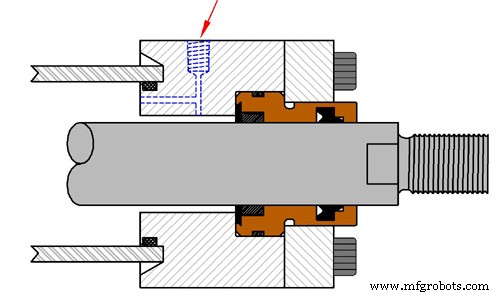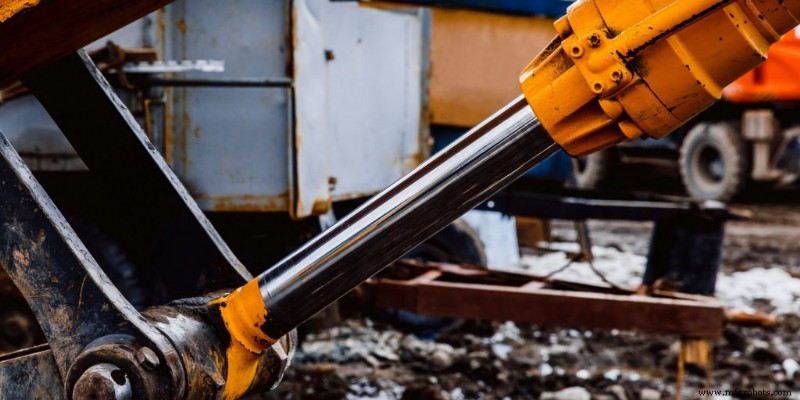您需要为液压缸放气吗?
许多人认为,只有在出现问题并且泵无法启动时,才需要为液压缸放气。但事实真的如此吗?在本文中,我们将了解为什么您可能需要对液压缸进行排气,以及需要执行哪些程序。
什么是液压缸?
液压缸用于许多应用,包括飞机、汽车和农业机械。它们由一系列相互连接的管子组成,这些管子对液体或气体加压以产生运动。
液压缸通常用于为泵、风扇和电机等设备提供动力。它们还可用于以受控方式移动物体或流体。
液压缸有多种尺寸和形状。它们通常由金属或塑料制成。它们可以是单缸或多缸机组。
什么是放气液压缸?
如果您的液压缸出现问题,请务必对其进行排空。给气缸放气将有助于清除可能阻塞活塞和阀门的任何碎屑,并将气缸恢复到工作状态。

放气式液压缸的类型
放气液压缸是维护设备和保持设备平稳运行的重要组成部分。放气液压缸有几种不同类型,因此了解需要放气的液压缸很重要。
最常见的放血液压缸类型是注射器类型。这种类型的气缸有一个安装在机器配件内的柱塞。柱塞被上下推动,当它到达底部时,流体通过接头被压出并流到地面上。这种类型的气缸可以使用压力排气器或真空排气器排气。
The pressure bleeder uses air pressure to push the fluid out. To use this type of bleeder, you first need to raise the pressure in the machine by turning up the gas or oil valves. Then, connect the bleeder tube to the fitting on the machine and open the bleed valve. Next, pressurize the bleeder tube by pumping air into it until the gauge reads 100 psi (pounds per square inch). Finally, close the bleed valve and wait until the gauge reads 0 psi before releasing the air pressure.
The vacuum bleeder uses suction to push the fluid out. To
Why would you bleed hydraulic cylinders?
Most hydraulic systems use pressurized hydraulic fluid to operate the machinery. The hydraulic pressure is created when the liquid is forced through a valve and into a pipe. When the system needs to be repaired, it’s often necessary to bleed the hydraulic cylinders by draining off the pressure.
Bleeding the cylinders allows air and other contaminants to escape and prevents them from building up, potentially causing damage to the equipment or even a fire. It’s also important to bleed the cylinders regularly if you’re using synthetic oil or any other type of lubricant, as these will add volatility and pressure to the system.
Are there any risks to bleeding a hydraulic cylinder?
There are a few risks to bleeding hydraulic cylinders, but they are generally quite low. One potential risk is that the cylinder could rupture, resulting in severe injuries. Another risk is that the fluid could come out in a harmful or explosive manner. In either case, however, the likelihood of these risks occurring is very low.
How to Bleed a Hydraulic Cylinder
Bleeding hydraulic cylinders is an important step in maintaining hydraulic system performance. This procedure cleans and lubricates the components and helps prevent corrosion. To bleed a cylinder, you will need the following supplies:
-Cylinder
-Bleed screw
-Locknut
-Wrench
-Hose clamp
-Hydraulic fluid
-Container to store fluid (optional)
To bleed a cylinder, start by attaching the bleed screw to the cylinder head. Tighten the locknut until the bleeding is complete. If you are using a container to store fluid, attach the hose clamp to the container and connect it to the bleed screw. Turn on the hydraulic fluid and wait for the cylinder to fill with fluid. Once it has filled, turn off the hydraulic fluid and remove the bleed screw.
When to Bleed a Hydraulic Cylinder
If you are seeing hydraulic fluid leaking from your hydraulic cylinder, it is most likely time to bleed the system. Here are four reasons you may need to bleed a hydraulic cylinder:
-A bypass valve has been opened inadvertently, allowing fluid to escape from the cylinder and into the system.
-The cylinder seal has failed, allowing air and fluid to mix and create leaks.
-The piston has become stuck in the cylinder, preventing it from moving and creating a pressure build-up.
-The hydraulic system has been damaged in some way and needs to be repaired or replaced.

How to find the correct cylinder to bleed
There are a few things to keep in mind when bleeding hydraulic cylinders. The first is the type of cylinder you have. There are three types of hydraulic cylinders- internal, external, and mixed. Each has its own specificBleed procedure.
Internal cylinders can only be bled through the Schrader valve on the side of the cylinder. External cylinders have a bleed port on one end that can be used to bleed them, and they also have a Schrader valve on the other end. Mixed cylinders have both types of valves- one on each end.
The next thing to consider is the pressure rating of the cylinder. Most industrial applications require a pressure rating of at least 300 psi. If you’re not sure what your pressure rating is, check with your manufacturer or look it up online.
Now that you know some basics about bleeding hydraulic cylinders, it’s time to get started! Here’s a step-by-step guide to bleeding an internal cylinder:
1) Turn off the power to the machine and remove any stray objects that could get caught in the machinery.
2) Open the bleed port on the side of the cylinder (if applicable) and insert a suitable tube into
结论
Bleeding hydraulic cylinders is a necessary task to keep your equipment in working order. However, it can be an extremely challenging and time-consuming process. In this article, we will discuss the different methods that are available for bleeding hydraulic cylinders and provide you with tips on how to successfully execute the task. We hope that this article will help make bleeding hydraulic cylinders a little bit easier for you.
Do you need to bleed hydraulic cylinders,please click topkitparts see more
工业设备


